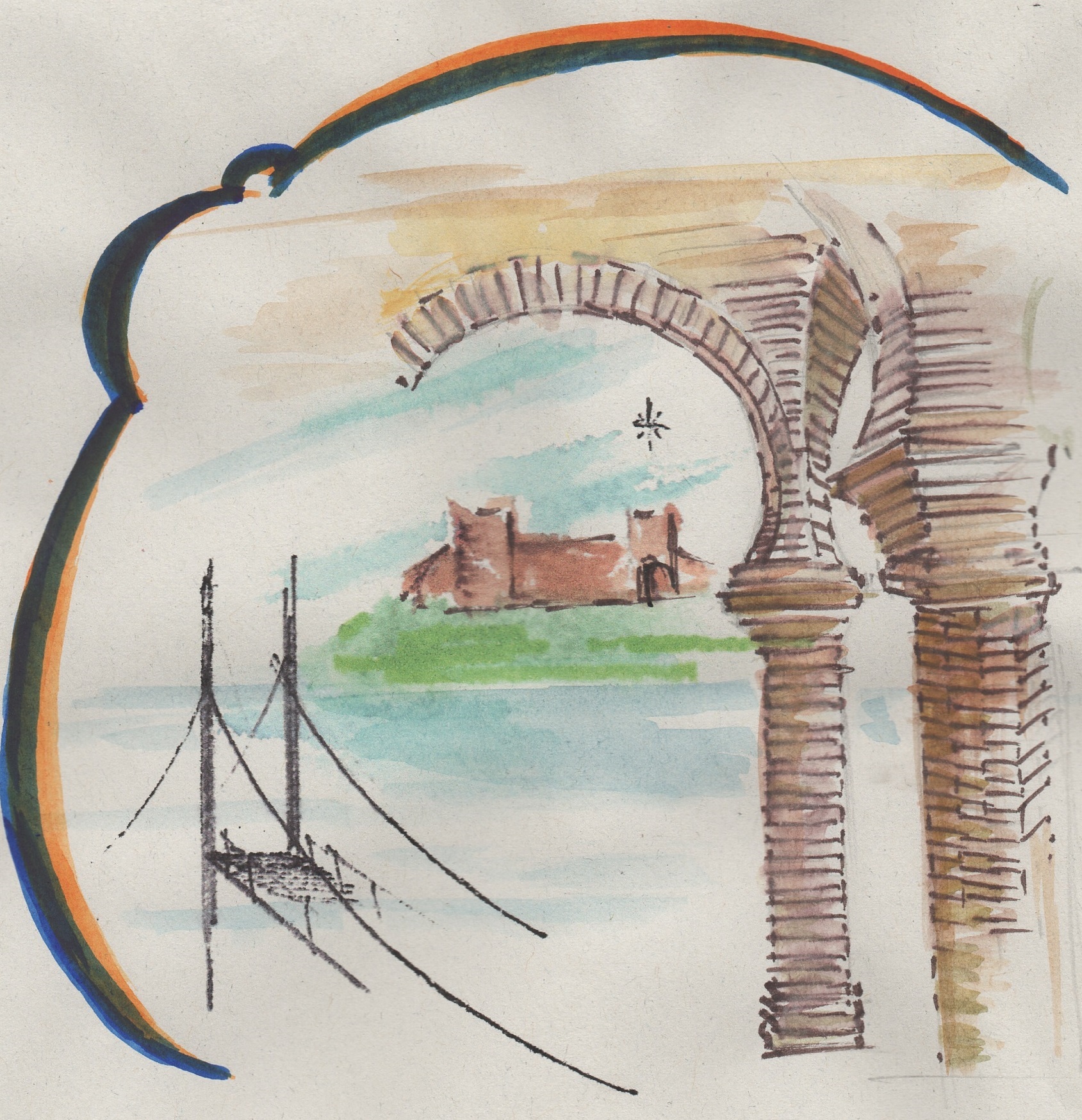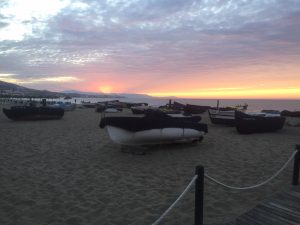A Fuengirola Mystery Solved
As a trainee Time Lord, there is nothing more satisfying than being able to correct a misunderstanding in the conflicting records of history.
One such misunderstanding came to mind when I read a column in the Sur in English last week about ‘The Birth of Fuengirola’. In this article, Patrick H. Meehan mentions the date of 7th August 1485 as the date of the Christian Conquest of Fuengirola. However, whilst everyone agrees it was 1485, the date must have been hijacked by the cult of San Cayetano AKA Gaetano dei Conti di Thiene.
It is worth reading the Sur in English article first and then coming back to this one to get the story.
At first it would appear that although Cayetano was just 5 years of age when this event occurred, the date of his death was coincidently occupied on the same 7th August date. Although the 5 year old was not involved it was a good enough coincidence.
To understand the matter further, I took a trip in my time machine back to 7th of August 1485. I had been reading the newspaper article on the beach as this occurred to me. It was easy to pick up beach equipment and take them into the blue boat with a canvas cover, which doubles up as my time machine.
Arriving on the beach by the Castle, my boat blended in. My wardrobe had printed me Castilian clothes, not the Moorish robes of before. A relaxing journey brought me to the beach where the BBQ boat A1 now stand on the morning of 7th August 1485.
With my chair, umbrella and packed lunch, I climbed the hill that overlooked the Castle, sat down and surveyed the landscape; it was desolate! The whole Moorish town to the south of the Castle lay in ruins, the previously grand Mosque was a pile of rubble. The fertile plains were overgrown or burnt to ashes while other fires could be seen to the North West.
High above the Castle I could see the flag of Castille, signifying that I am indeed late for the battle.
There almost seems to be no local population, just soldiers and camp followers. They are all located in and around the Castle with mekeshift fortifications facing Mijas Pueblo. What happened? How? So many questions. Time some simple law of attraction and the mantra of Lau Tsi that “when the pupil is ready the teacher will appear”. Sure enough, I see a soldier walking up the hill in front of me.
“Good Afternoon Sir, I am Juan, a member of the supply division of the 5th Crusading Legion under the command of Don Alvaro de Mesa, and who are you?”
So, I give my explanation of being a journalist following the Armies of King Ferdinand and reporting on the great battles. Because I am not up to date on the news, I have arrived here ready for the great battle to take Fuengirola Castle from the Moors.
He laughed and said, sorry you are 2 months late. It’s all over, we have sent them running up to Mijas which is now under siege. Remembering the bottle of wine in my cooler bag, I invited Juan to sit and join me and tell me what happened.
He said he was not actually there on the day it was taken, he was involved in the logistics of bringing support from Marbella along the coast.
When he arrived here he had asked the troops in the Caste what happened and he was getting 2 responses. He had heard both that there had been a battle and that there had been no battle.
Some said they had fought boldly to the last Moor standing, others that they had fled to Mijas when the watchtower keepers had seen a vast army arriving. “There were no casualties on our side and within 2 days there were no signs of blood. It looked more like the Moors had destroyed their own buildings and crops in a scorched earth policy rather than sustained battle damage”. To find out more, these things are always material, I asked him how they were paid. He told me of the various pay grades and of the bonuses; if they fought in a battle they got more bonuses.
Normally the head of a fighting force that captures a town after a battle is almost certain to be left as the leader of that town. If there is no battle then someone else will administer the town and lands while the fighters and their leader carry on to the next battle.
In a hushed tone, Juan told me; “you see, I work for the supply department and our own leader would have been in charge of this town until the King gave it to a nobel. However, because there was a battle, Alvaro de Mesa is now the leader of Fuengirola. The title is hereditary and will pass through his family forever.”
“Alvaro is a vicious man, he is 50 years old and has been fighting in the armies of the king all of his life. He has killed hundreds of Moors with his own sword and led armies that have killed tens of thousands. He is a hard and tough man with no morals or scruples.
The first thing the King did, or his travelling secretary did because the King is far too busy to come here, was to appoint Alvaro as warden of the Castle. There is a story that a bribe was paid, but who knows how these things work. All the land from Benalmadena to Cabopino now belongs to him. It is Alvaro’s job to give out the land fairly to hard working settlers; if anyone who has met him believes that, then they are mad.
And that huge family of his are no better, they were in Marbella with us while he bought his army here. The women are up-market camp followers and Alonso’s sons are criminally inclined brats.
The eldest is Cristóbal, a seriously-minded and intense chap, a brave soldier with all the lack of social grace of his father. Then the worst one of the lot is Alvaro. He schemes, cheats, steals and lies. He is brave when slaughtering refugees, but always keeps out of the way of the real fighting. We have been warned not to sell food to him for his black markets – he is treating this war as a ‘get rich quick’ scheme. None of us like our enemy but he is consumed with hatred even for the Women and children.
He tells me that among the troops there is a common conception that Alvaro will one day commit patricide and fratricide to take his Fathers place. Although I am not a fortune teller, I can assure you that if that were to happen, it would be the end of Fuengirola.”
Juan is amazed at the quality of the wine, so I leave it with him as he stares at the Mercadona price tag and Marqués de Riscal label. He tells me of life in Spain in these difficult days of nation building. He is clearly traumatised by the brutality of taking a land from one race on behalf of another. After a while, I leave him more of Mercadonas’ finest (in his flask, I cannot leave the bottle) and make my way to the boat on the beach.
On the way home I am reflecting on how the date was so far out. From my vast library I consult the literature. In his Book “Breve historia de Fuengirola”, Dr Juan Antonio Martin Ruiz locates it to 7th August 1485 on page 36 as does Patrick H. Meehan in “Fuengirola Revisited”. However Manuel Lopez de Ayala in his book “Curiosidades Históricas de Fuengirola y Mijas” locates it in that summer. Then Don Cristobel Vega Vega is very careful not to use the date but to again locate it in the Summer of 1485.
A flash of light occurred to me. History is written by the winners and as in any town in history, the most educated were, most often the Priests. As the history of the town was first written, the Catholic Church had various factions within it who would promote the cause of a particular saint. Cayetano was made a saint in 1671 and perhaps because of the influence of the religious order he founded, gained a great following in Spain.
It is my opinion and I may be right or wrong; but I think that an early historian of Fuengirola, possibly clerical, moved the date of the taking of Fuengirola to suit the religious calendar and make the town more ‘blessed’ than it was. More Cayetano than thou or nearer my Cayetano to thee. Still I am not a theologian or hagiographer, just a time traveller. Today a whole district of the town, roads, a school, a cemetery and shops have been named in his honour due to the coincidental date.
His name shapes our map but Fuengirola is not recorded in the hagiography for San Cayetano. You will see he is the patron saint of Argentina, the unemployed, gamblers, document controllers, gamers and good fortune. All of these people and plenty of good fortune are found in Fuengirola.
With these thoughts, I find myself back on the beach of Fuengirola – that red wine was nice…

